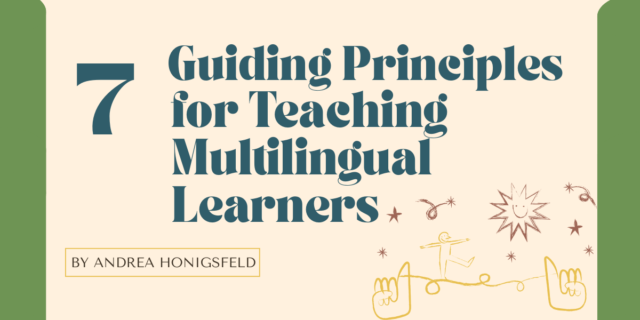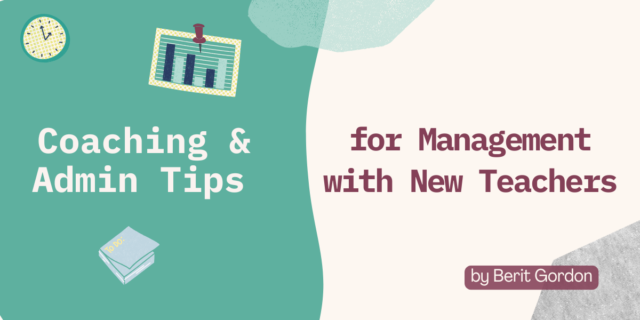
As our global economy increasingly demands a highly educated, bilingual and biliterate workforce, educators feel more compelled than ever to offer culturally and linguistically responsive education that speaks to these demands as well as the diversity of today’s student population. In Dual Language Education, Sonia Soltero provides a comprehensive view of what it takes to create well-designed, effective, sustainable dual language programs based on current dual language research and theory. Each chapter examines the pedagogical and organizational principles of dual language education, and the specific conditions necessary for their effective implementation. Vignettes from teachers, parents, and school leaders, illustrate the transformative power of dual language education to benefit all students.
In this blog, taken from Sonia’s introduction, she writes about how dual language education is not a passing fad, nor is it an experiment for schools.
♦ ♦ ♦ ♦
When her principal began talking about starting a two-way dual language program, Alexa thought, “Here we go again, jumping on the bandwagon of the latest fad. Don’t we already have enough on our plate?” She was not the only teacher in the school who was growing tired of what seemed like a never-ending revolving door of new programs and initiatives that they had to invest time and energy in learning about and aligning to their curriculum and instruction. Alexa, a well respected and dedicated teacher, had taught in the transitional bilingual program at Recoleta Elementary School for more than seventeen years. Alexa’s original negative reaction came from years of implementing new programs imposed from district and school administrators, only to be abandoned a few years later. She thought they did not need to embark on yet another short-lived “experiment” and made this abundantly clear to the other teachers, parents, and the principal whenever she had the opportunity. But after months of discussions, the majority of the teachers, support staff, and parents voted in favor of implementing a dual language program at Recoleta. Even though she would not technically have to teach in the program for a few years, she made it known that when dual language reached fourth grade, she would move to the middle school grades to avoid teaching in the program.
Unexpectedly, by the time dual language reached fourth grade, Alexa was one of the program’s most enthusiastic and committed supporters. What made her change her mind so drastically? During the planning phase and the first year of implementation, Alexa began to hear about dual language education from the prekindergarten (PK) and kindergarten teachers and from parents of children who had participated in the program that first year. She slowly became interested in learning more about dual language and realized that maybe this new initiative would not just be a passing fad like all the others had been. She began to understand that many of the premises on which dual language is based very much aligned with her own views about developing bilingualism and bilingual teaching approaches. Years later, Alexa shared that her change of heart was partly because she felt free to express her opinion and ask questions. She also thought that this time the decision-making process was more collaborative, and there was a more comprehensive “fact-finding” effort and a well thought-out planning process. Alexa saw firsthand how students in the dual language program were progressing academically in their first and second languages. She also often heard how happy parents were with their children’s participation in the program. What impressed her most were the friendships and interactions that had developed between English learners (ELs) and native English-speaking students, bilingual and general education teachers, and families from the two language groups. This was something that seldom happened before the dual language program was implemented. EL families and their teachers had little interaction with students and families from the general education classrooms, so it was a welcomed and unexpected surprise for Alexa that this was happening. This segregation was slowly giving way to meaningful collaborations and friendships across languages and cultures at Recoleta.
The transformation that Alexa experienced illustrates the types of positive outcomes that come from developing comprehensive understandings about dual language education and the many possibilities and opportunities it affords when well-designed and implemented. This book provides guidelines and research-based evidence to build the comprehensive knowledge necessary to plan and implement sustainable high-quality dual language programs.
I write this book from the lens of a practitioner, not just an outsider researcher. My background and experiences as a dual language public school teacher for fourteen years and dual language program coordinator give me an unusual insider viewpoint and understanding about what it takes to create effective, long-lasting dual language programs. Because I am also a product of dual language education, I have firsthand experience of what it is like to be a dual language student in K–12 schools. This book is based on my thirty years in the field of bilingual education as a dual language teacher, dual language program coordinator, researcher, and professional developer. The focus of my research over the past decades has been on dual language program design and curricular development, as well as leadership practices in program implementation, sustainability, and improvement.
This book is intended for teachers, school leaders, and district administrators interested in implementing new dual language programs, as well as those looking to improve their existing models. Each chapter examines the pedagogical and organizational principles of dual language education and the specific conditions and features necessary for their effective implementation and sustainability. Included are in-depth discussions on fundamental elements that must be considered when increase in universities and colleges offering dual language coursework and special certificates. Teacher-preparation programs across the United States are offering this specialized coursework in response to school districts’ needs for better-prepared dual language teachers and school leaders.
♦ ♦ ♦ ♦
♦ ♦ ♦ ♦
 Dr. Sonia W. Soltero has over 30 years of experience in the field of bilingual and English Learner education as a dual language teacher and coordinator, professional developer, researcher, and university professor. She is an Associate Professor and the Chair of the Department of Leadership, Language and Curriculum at DePaul University. Be sure to follow her on Twitter here: @soniawsoltero
Dr. Sonia W. Soltero has over 30 years of experience in the field of bilingual and English Learner education as a dual language teacher and coordinator, professional developer, researcher, and university professor. She is an Associate Professor and the Chair of the Department of Leadership, Language and Curriculum at DePaul University. Be sure to follow her on Twitter here: @soniawsoltero


